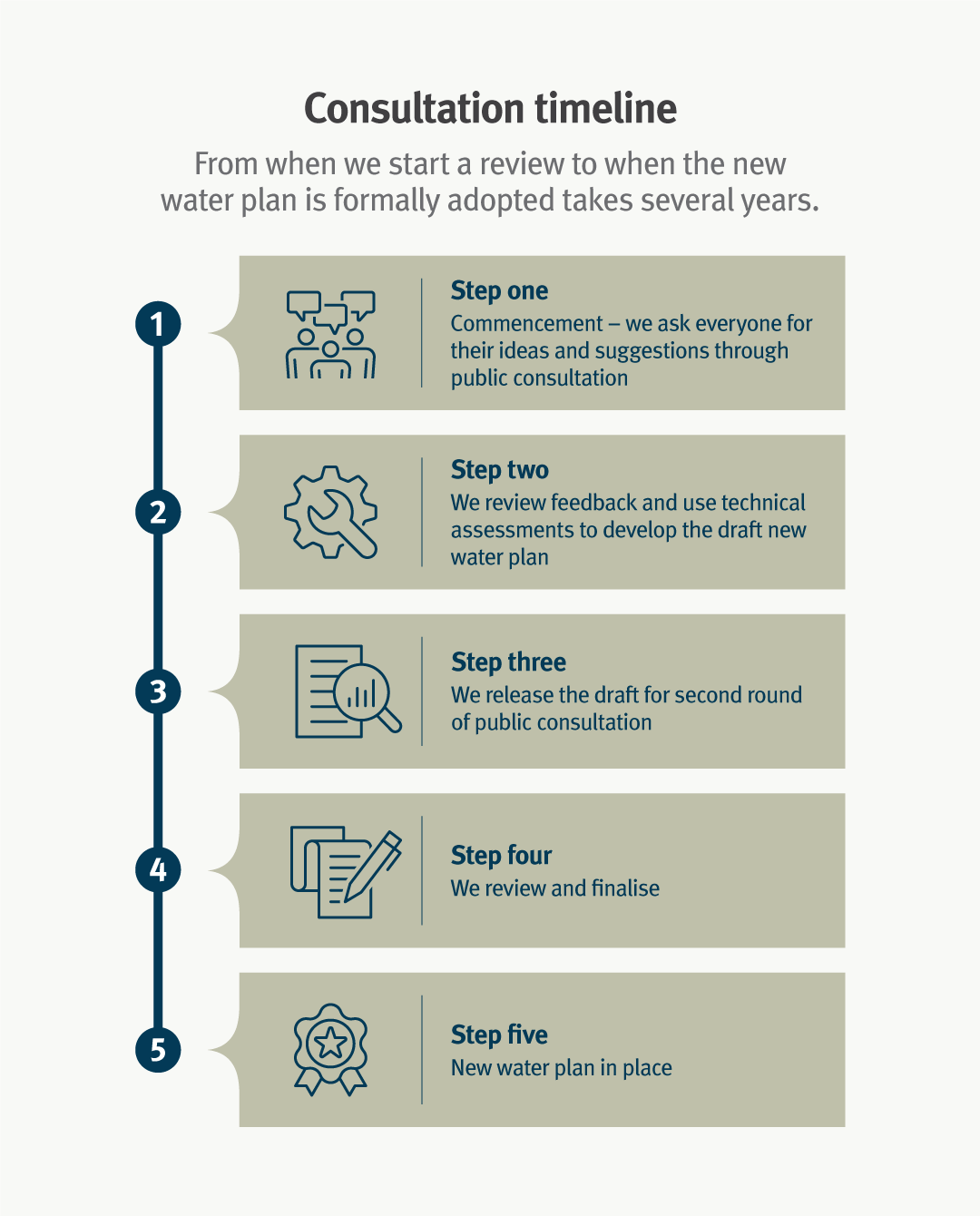Developing water plans
Stages of the development process
The development process generally includes the following stages:
- preliminary public consultation
- technical assessments (environmental, economic, social, hydrologic and cultural), policy development and consultation
- preparation of a draft water plan
- publication of draft plan and opportunity for public submissions
- consideration of submissions
- finalisation and approval of water plan.
When an existing water plan is reviewed, all these steps are done in full again.
Each stage might take a year or more. Developing or reviewing a water plan is a multi-year process.
Community input
We consult with a range of interested people including:
- regional communities
- Aboriginal and Torres Strait Islander groups
- conservation groups
- industry
- peak bodies
- water entitlement holders
- water service providers
- local government.
You should check your water plan area for any upcoming consultation.
Aboriginal peoples and Torres Strait Islander peoples
From October 2018, new or replacement water plans will explicitly recognise the importance of water resources for Aboriginal peoples and Torres Strait Islander peoples.
Cultural outcomes will be stated separately instead of being embedded in social, economic or environmental outcomes, and water plans will need to include strategies for their achievement, monitoring and reporting.
Technical assessments
The best available science underpins the development of water plans. These technical assessments include:
- environmental assessments: ecological modelling using data collected on the flow requirements of ecosystems
- hydrologic assessments: models which draw on over 100 years of recorded flow data and represent a range of development, management strategy and climate impact scenarios
- social, economic and cultural assessments: identification of water related social, economic and cultural values.
Water plans consider information about historical rainfall, run-off information and water use. This helps us better understand and manage risks to water security, communities, and the environment. Strategies for managing climate-related risks may be included in water plans.
Collectively the assessments are important in determining the amount and type of water available so the water can be shared sustainably.
The Water planning science plan 2020–2030 explains how we use science to develop water plans and improve water planning. You can also explore the various ways we use science in water planning using our interactive storymap.
The Queensland’s water plans in a variable and changing climate report provides an overview of climate change modelling for water planning and climate change projections for individual plan areas.
Also consider...
- Find out how to request copies of hydrologic models and surface water data for your business.
- Access water plans and other planning documents for your water plan area.
- Read the Water planning science plan 2020–2030 to find out how we use science to develop water plans and improve water planning.
- Explore the various ways we use science to develop, monitor, review and evaluate our water plans using our interactive storymap.
- Read Queensland’s water plans in a variable and changing climate report to understand how water plans incorporate climate science and manage the risks of climate variability.
